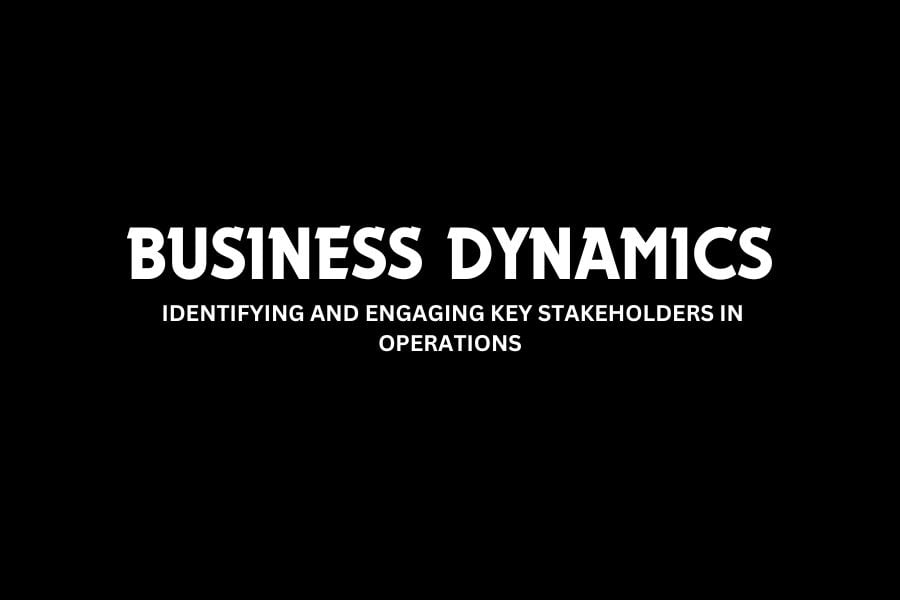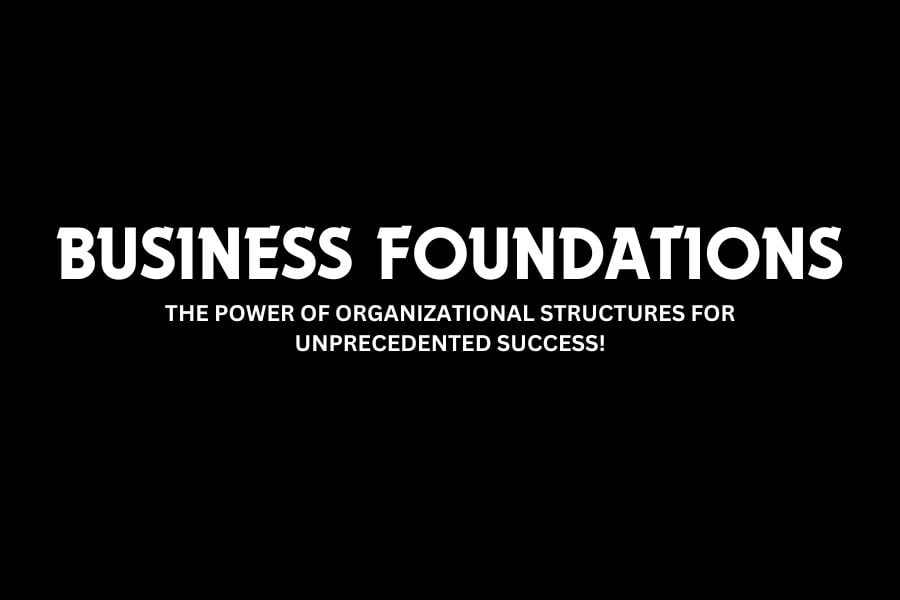Business Dynamics: Navigate the complexities of business success by understanding and engaging with key stakeholders. This comprehensive guide explores the influential network shaping strategic decisions, offering insights into varied perspectives and proactive engagement strategies.

Empower Your Business Odyssey: Unraveling the Tapestry of Stakeholders for Strategic Brilliance!
In the intricate dance of business operations, the ability to discern and engage with key stakeholders stands as a linchpin in shaping organizational strategies. This exploration aims to unravel the complex network of individuals, groups, and entities that not only influence but are also influenced by the day-to-day workings of a business. Let’s delve deeper into this critical aspect of business acumen.
1. Stakeholders: The Essence of Influence
Stakeholders are the heartbeat of business, representing a diverse spectrum that extends beyond shareholders. From customers and employees to suppliers, investors, regulatory bodies, and the community, each stakeholder holds a distinct role in the orchestration of business dynamics. Their interests, expectations, and perspectives form the mosaic that organizations must navigate.
2. Varied Perspectives: Navigating the Tapestry
Understanding the myriad perspectives of stakeholders is akin to wielding a compass in uncharted territory. Customers seek satisfaction and value, employees yearn for job fulfillment and equitable treatment, while investors crave returns on their investments. Regulatory bodies set the rules of engagement, and the community at large shapes the social context. Recognizing and respecting these diverse viewpoints is not just a strategic imperative but a cornerstone for ethical and sustainable business practices.
3. Stakeholder Influence on Decision-Making: The Power Play
Decisions within organizations are not made in a vacuum; they are shaped by the influence of stakeholders. Customers’ preferences impact product development and marketing strategies. Employees’ input molds internal policies and organizational culture. Investors’ expectations steer financial decisions and the overall trajectory of the business. Regulatory bodies set the framework within which organizations must operate. Acknowledging the power dynamics among stakeholders is paramount for crafting decisions that harmonize with various interests.
4. Mapping the Landscape: A Strategic Approach
Effective stakeholder management begins with a comprehensive stakeholder analysis, akin to creating a topographical map of influence. This involves identifying and assessing the level of influence, interest, and potential impact each stakeholder holds. By crafting a nuanced stakeholder map, organizations gain a panoramic view of who wields the most significant influence and where strategic alignments are crucial.
5. Strategies for Proactive Engagement: Turning Influence into Partnership
Engaging with stakeholders is not merely a reactive strategy; it’s a proactive investment in organizational success. Establishing robust communication channels, soliciting feedback, and involving stakeholders in decision-making processes foster transparency and trust. Actively engaged stakeholders become strategic partners, contributing to the agility and resilience of the business.
6. Navigating the Complexities: Challenges as Catalysts
Stakeholder dynamics, though potent, are not without challenges. Conflicting interests, evolving expectations, and external pressures can pose complexities. Organizations must exhibit agility in navigating these challenges, employing a responsive approach to shifting stakeholder landscapes. Transparent acknowledgment and resolution of concerns build trust and fortify the organization against unforeseen challenges.
Conclusion: Crafting a Stakeholder-Centric Future
In the ever-evolving landscape of business, the identification and engagement of key stakeholders emerge as transformative steps toward building resilient and stakeholder-centric organizations. Beyond compliance, this journey is about fostering collaboration, sustainability, and positive societal impact. By actively understanding and responding to the intricate web of stakeholders, businesses not only weather challenges but also position themselves as architects of a future where success is not just measured in profits but in the positive influence they exert on the world around them.
ALSO READ
- Business Foundations: Unveiling the Power of Organizational Structures for Unprecedented Success!
- Reviving Centuries: Unveiling the Epochs of Business Evolution with Power and Precision
FREQUENTLY ASKED QUESTIONS
Q1: How do stakeholders influence strategic decisions in a business?
Stakeholders influence strategic decisions through their diverse perspectives and interests, impacting areas such as product development, internal policies, financial decisions, and overall business direction.
Q2: What is the significance of a stakeholder analysis in business?
A stakeholder analysis helps organizations identify and assess the influence, interest, and potential impact of each stakeholder. It serves as a strategic tool for understanding the power dynamics and making informed decisions.
Q3: How can businesses proactively engage with stakeholders?
Proactive stakeholder engagement involves establishing robust communication channels, soliciting feedback, and involving stakeholders in decision-making processes. This fosters transparency, trust, and a collaborative approach.
Q4: What challenges do businesses face in stakeholder dynamics?
Challenges in stakeholder dynamics may include conflicting interests, evolving expectations, and external pressures. Navigating these challenges requires organizational agility, transparency, and responsive strategies.
Q5: How can stakeholder engagement contribute to business sustainability?
Actively engaging with stakeholders contributes to business sustainability by fostering collaborative partnerships, addressing concerns transparently, and aligning organizational strategies with stakeholder expectations for long-term success.


